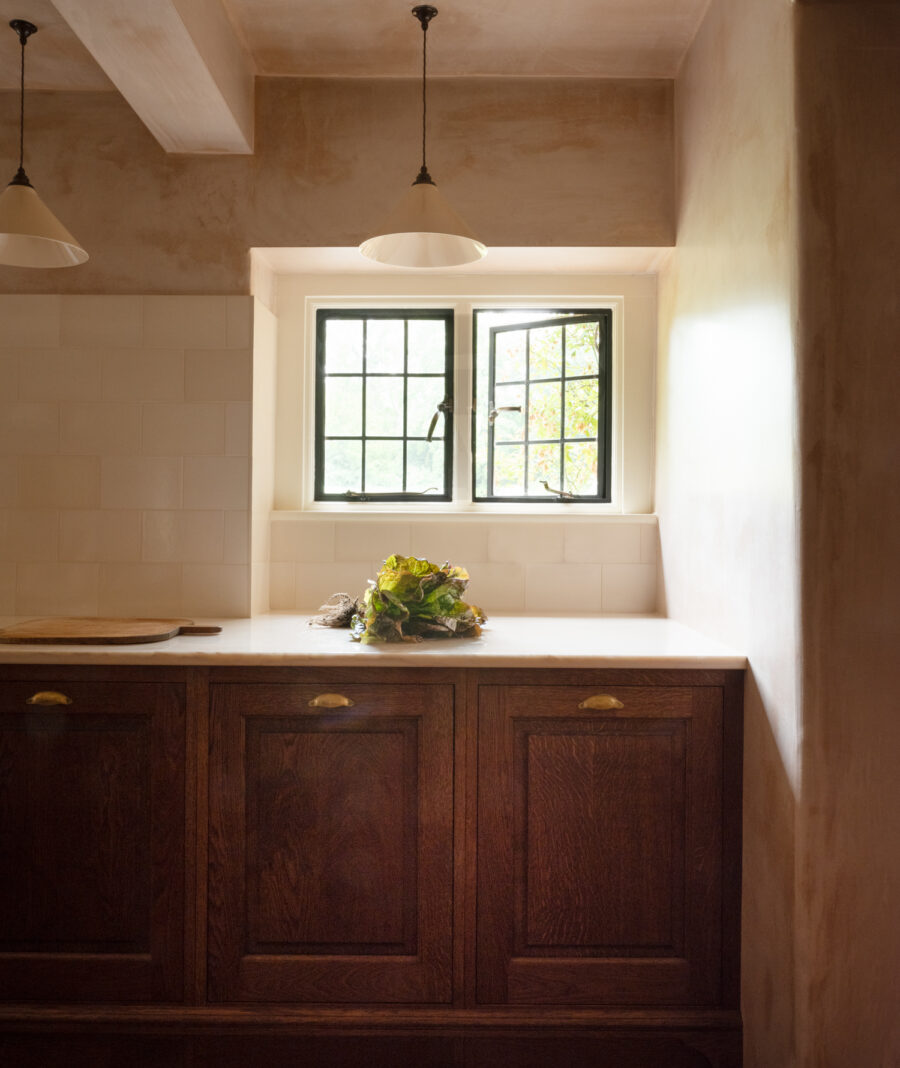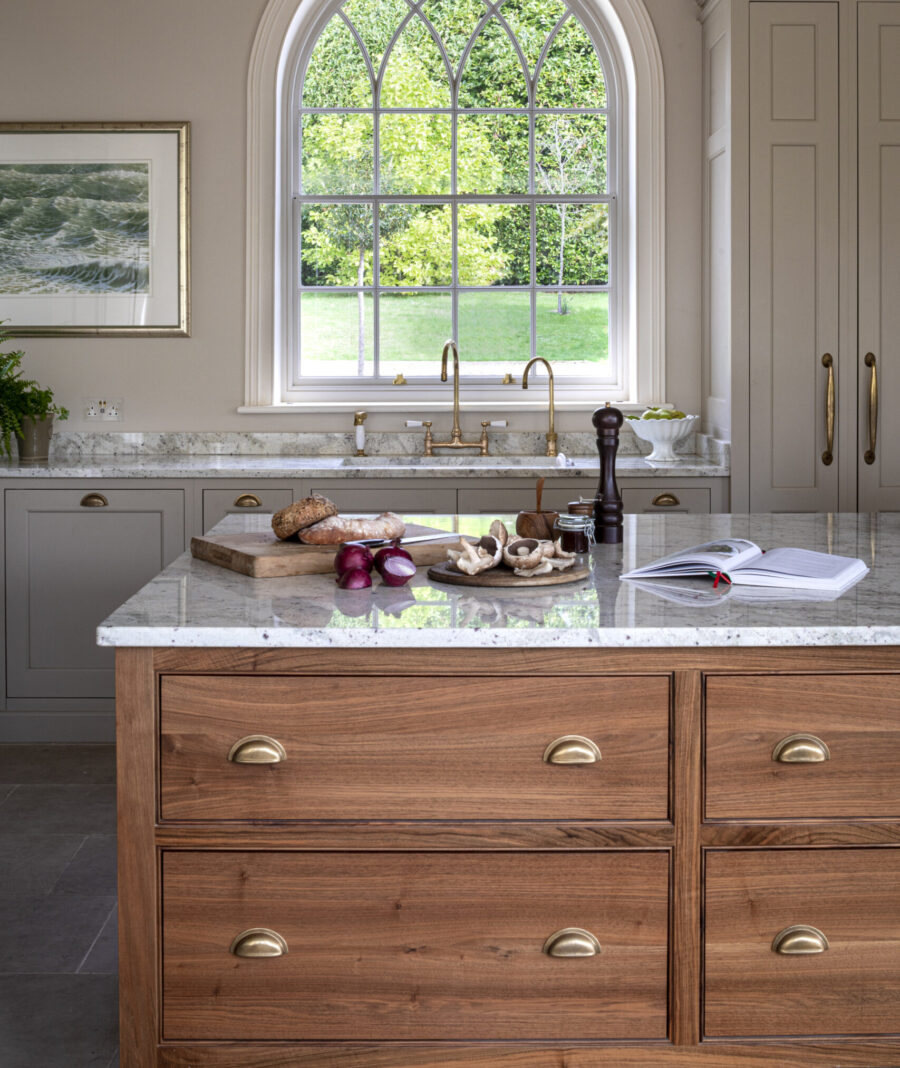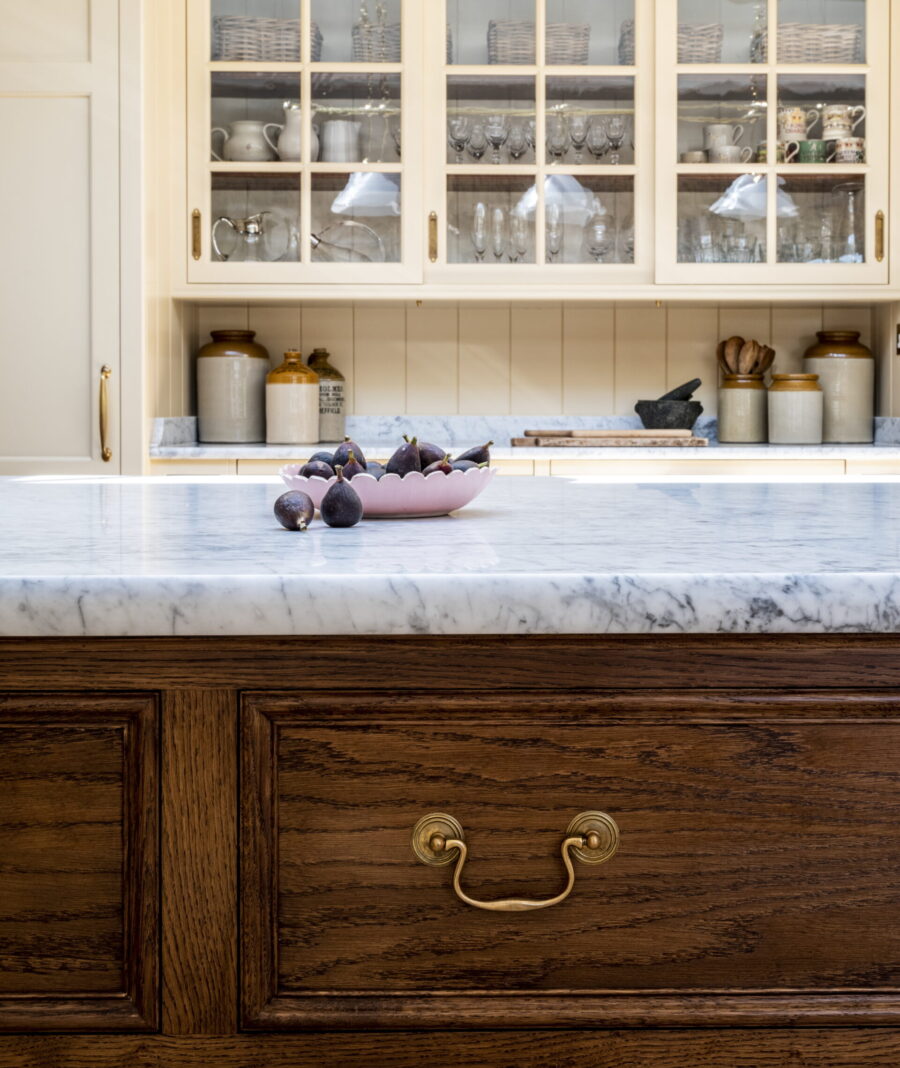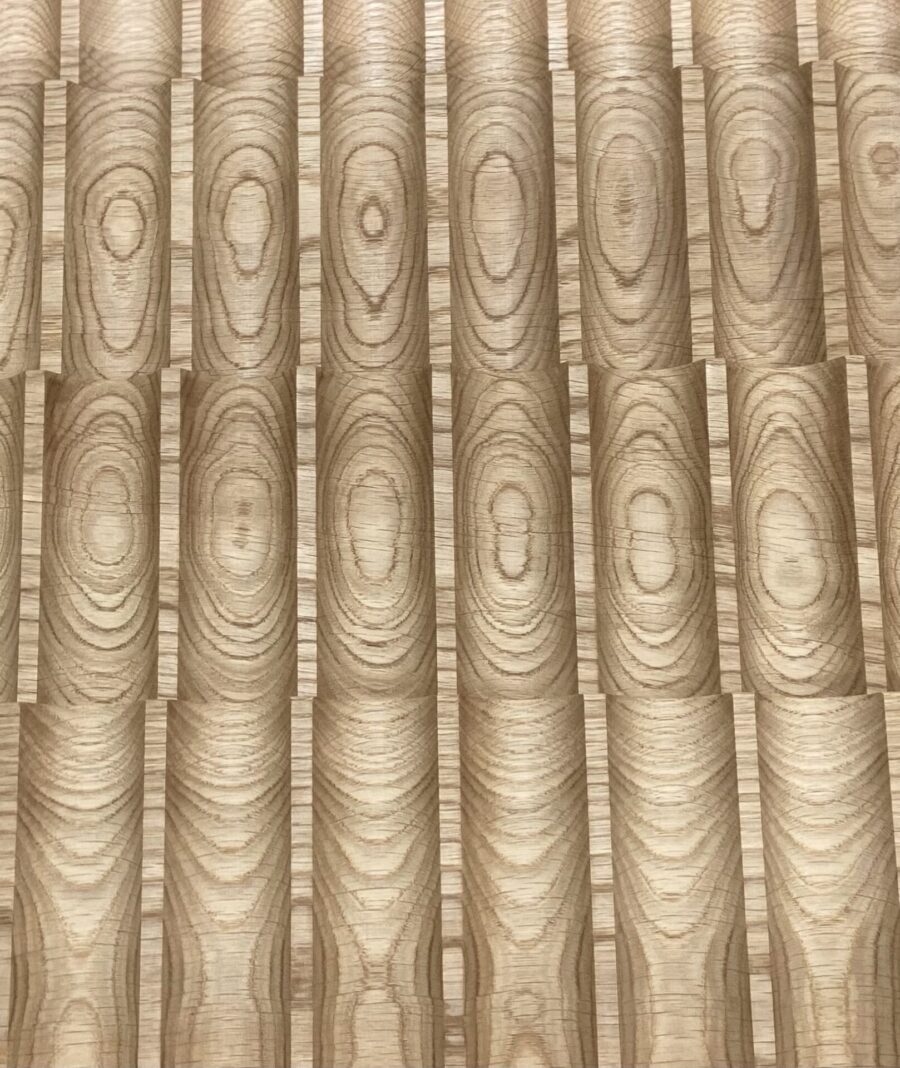Journal
Why we favour French Polish over Spray Lacquer
Kitchen Finishes – Modern vs Traditional Finishes
December. 2023
Kitchen finishes is a topic of much debate in our design studio in Wiltshire, and the plethora of new paint brands and other finishing methods can be hard to keep track of. For a lustrous finish to natural hardwood, the choice between French polish and spray lacquer can be a pivotal decision. Both techniques have their unique characteristics, offering distinct results that cater to different preferences and styles.
We design both painted and hardwood bespoke kitchens here, and we have covered the painting of our bespoke painted kitchens in another article.

HARDWOOD
Unpainted hardwoods used in the domestic spaces of most English country houses tended to be limited to those materials found in the typical deciduous woodlands found near the house in question, with oak, sycamore, ash, elm and chestnut being those found most commonly in historic houses around England.
How a modern maker treats these hardwoods is important, particularly if the goal is to add character and patina to the rooms being designed. Hardwood kitchen finishes therefore warrant particularly in-depth debate.
If you speak to most traditional furniture restorers, they will tell you that a good finish should be in the wood, not on it, and when it comes to wood finishes, there are a variety of options to choose from.
Two popular finishes are spray lacquer and French polish. At Guild Anderson we typically use spray lacquer to protect the interiors of cabinetry. While both finishes have their benefits, they differ in terms of application, appearance, durability, and maintenance. In this article, we will explore the differences between spray lacquer wood finishes and French polish finishes.
When it comes to deciding between a french polish or lacquered finish, one isn't better than the other, each has their advantages

SPRAY LACQUER WOOD FINISHES
Spray lacquer is a finish that is applied through a spray gun. This type of finish is popular in commercial settings because it dries quickly, is easy to apply and very robust. Spray lacquer is made up of a combination of resins and solvents. When sprayed onto wood, the solvents evaporate and the resins form a hard, durable coating. Spray lacquer comes in a variety of sheens, from matte to high gloss, and can be tinted to match any color.
One of the biggest advantages of spray lacquer is its speed of application. Because it dries quickly, multiple coats can be applied in a short amount of time, allowing for a faster overall finishing process. Additionally, spray lacquer is resistant to water, chemicals, and scratches, making it a durable option for high traffic areas.
However, there are some downsides to spray lacquer. It can be difficult to apply evenly and requires a steady hand with the spray gun. Spray lacquer can also highlight imperfections in the wood, such as scratches and dents, if not properly sanded and filled beforehand. Lastly, because spray lacquer is a synthetic finish, it does not enhance the natural beauty of the wood in the same way that other finishes do.
Spray Lacquer adds an ultra-hard finish to furniture and accessories

FRENCH POLISH FINISHES
French polish is a finish which has been used for centuries to enhance the natural beauty of wood. This finish is made up of a combination of shellac, alcohol, and oil. French polish is applied by hand, using a cloth or pad, and is built up in layers. Each layer is applied thinly and allowed to dry before the next layer is added. This process can take several days to complete but results in a finish that is rich, warm, and has a depth that cannot be achieved with other finishes.
One of the advantages of French polish is its ability to enhance the natural beauty of the wood. French polish allows the grain and figure of the wood to show through, giving the piece a unique and personalised look. Additionally, French polish is a renewable finish. Over time, it can become dull or scratched, but it can be easily refreshed with a new coat of polish, without the need for stripping or sanding. This work can also be undertaken in-situ.
However, French polish does have some downsides. It is a time-consuming process which requires a skilled hand. It can also be more expensive than other finishes because it requires more labour. French polish is not as durable as some other finishes, such as spray lacquer, and it is more susceptible to water damage and scratches (although at Guild Anderson, our finishers add a hardener to the French polish which gives the finish more strength).
The build-up of layers of French Polish which characterises the technique serves practical as well as aesthetic purpose

WHICH WOOD FINISH TO CHOOSE?
Most makers, particularly kitchen makers, will dismiss using traditional finishes, mainly because the skills needed to use them with confidence are not as readily available as modern finishes sprayed off the gun.
The art of furniture restoration and the skill that come with it are sadly dying as consumers turn to modern furniture made and finished in a modern way. Some will dismiss traditional finishes for bespoke kitchens because they think they are not as robust as spray applied plastics. This is misguided.
Traditional French polishes can have resin added to them which improve their strength in the hostile environments of rooms like a family kitchen or boot room. The other joy of French polishes is that they can also be repaired in-situ as opposed to PU lacquers which must be re-sprayed, mainly off-site.
The debate between French polish and spray lacquer is not about one being superior to the other, but rather about selecting the finish that aligns with your vision for your furniture. Both techniques contribute the artistry of fine furniture finishing.


